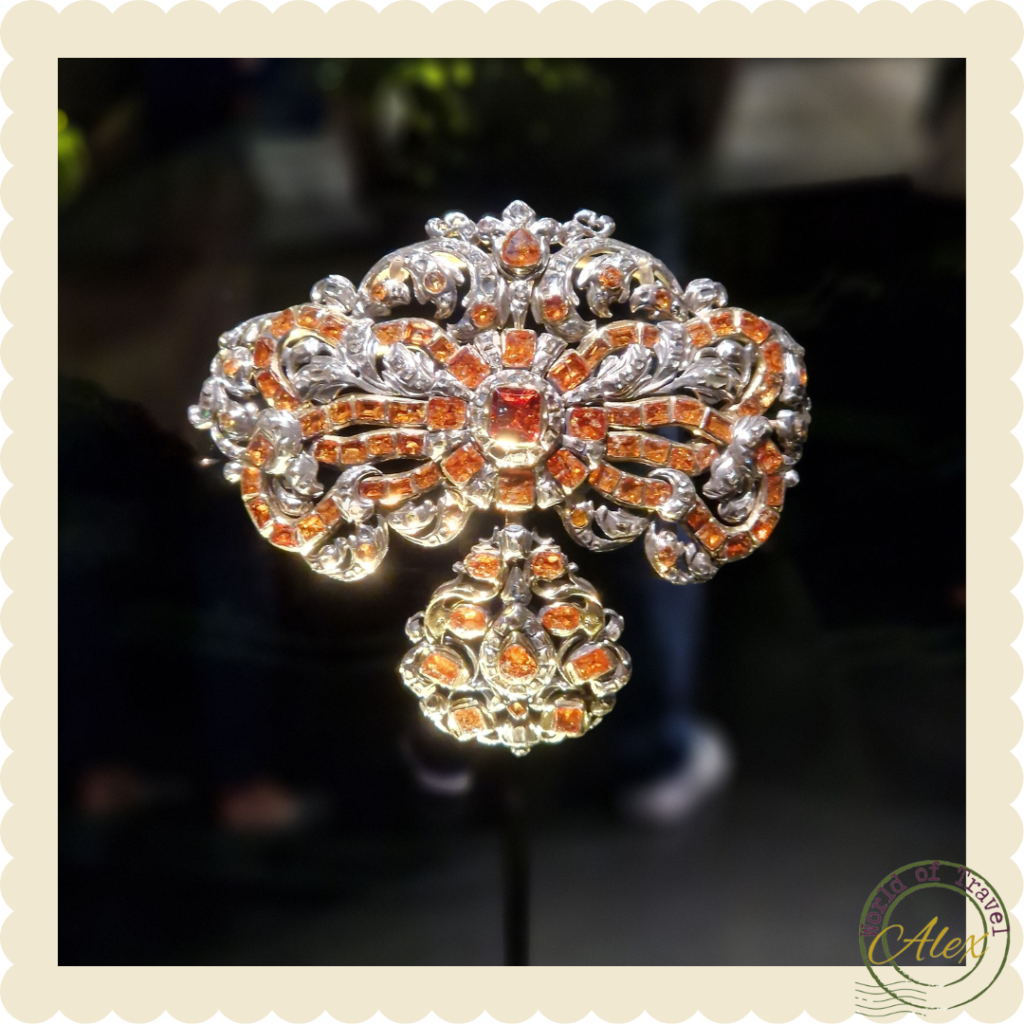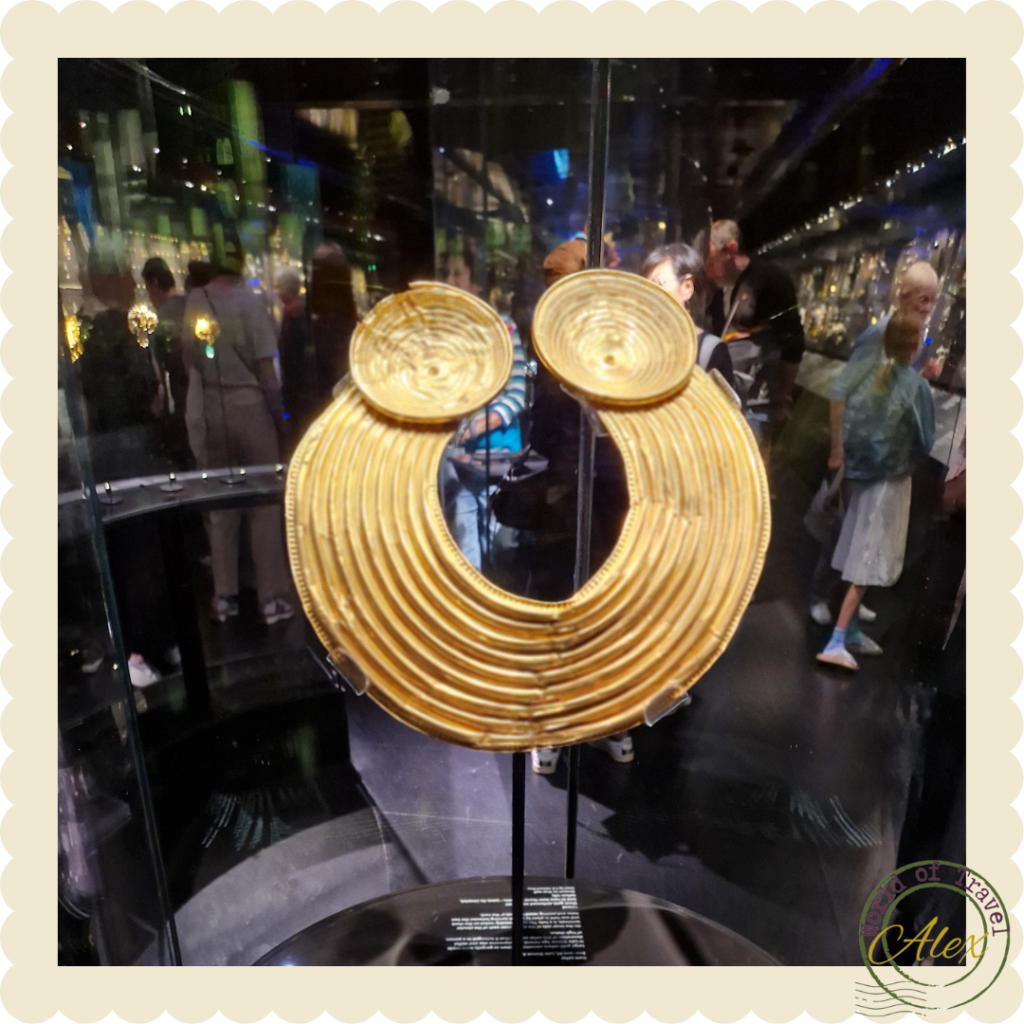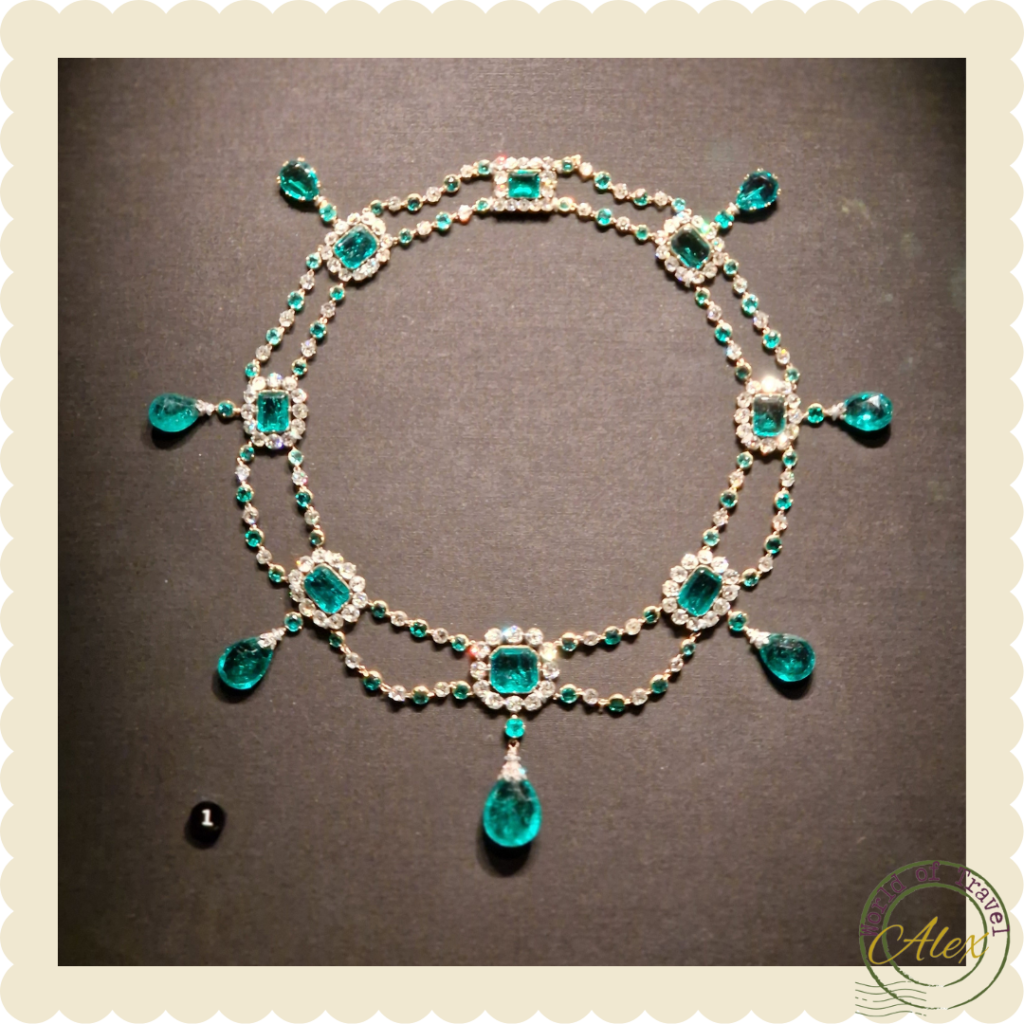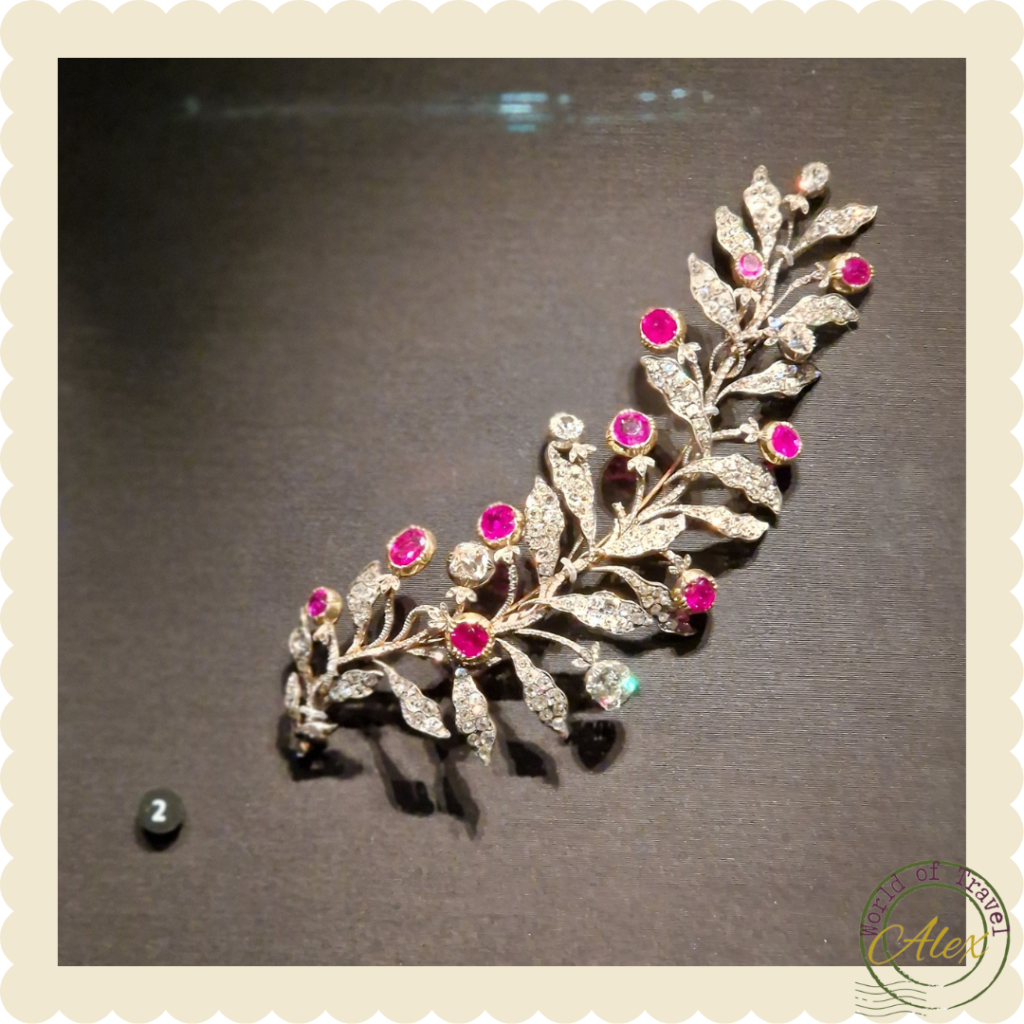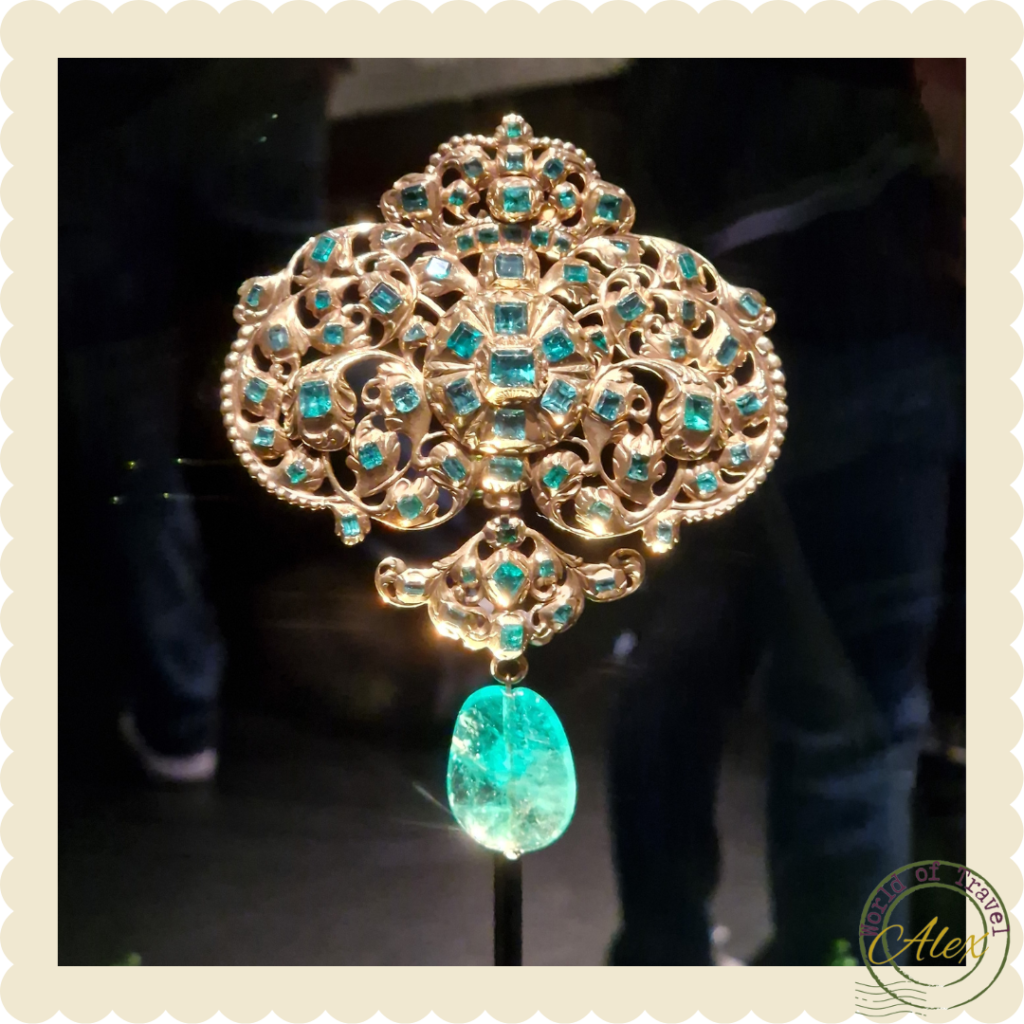Visiting the Jewellery Collection at the Victoria and Albert Museum
A visit to the jewellery collection at the Victoria and Albert Museum in South Kensington is a delightful journey through time and culture. Here’s your guide to making the most of your visit to this enchanting exhibit of Jewels and Jewellery.

Plan your visit
The Jewellery collection at the Victoria and Albert Museum in South Kensington is a stunning exhibition of mostly western art culture spanning from pre-historic times until today.
The collection is a fixed feature of the V&A museum and is located in the William and Judith Bollinger Jewelry Gallery on the first floor. The pieses are beautifully displayed behind glass, mostly ordered by historic timeline, and have good information.
The Jewellery Collection at Victoria & Albert Museum
The V&A’s jewelry collection is a world-renowned gem, widely regarded as one of the finest and most comprehensive collections globally. With over 3,000 pieces on display, it spans a timeline from ancient civilizations to contemporary designers, making it a remarkable opportunity to witness the evolution of jewelry design and its cultural significance.
Since 1850, the V&A has been avidly acquiring beautiful, technically challenging, and innovative jewelry, viewing it as a crucial element of its exhibitions. The majority of these acquisitions have been made possible through generous donations. The collection predominantly features jewelry from the Middle Ages to the present day, with a particular emphasis on pieces from the 18th and 19th centuries.
These magnificent jewels are elegantly displayed at the Victoria and Albert Museum in South Kensington within the William and Judith Bollinger Jewelry Gallery, a permanent exhibition that is freely accessible to all. It’s a unique opportunity to immerse yourself in the world of jewelry, exploring its rich history and artistic evolution.
The Duchess of Manchester Cartier Tiara
Crafted by Cartier in 1903 for Consuelo, Duchess of Manchester (1858-1909), this tiara is a dazzling testament to the Belle époque era. Consuelo, one of the first American heiresses to marry into the British aristocracy, commissioned this magnificent piece. Adorned with over 1,500 diamonds, most supplied by the Duchess herself, the tiara features a pattern of flaming hearts. It is set in silver backed with gold, with c-scrolls subtly adorned with pastes. Measuring 9.1 cm (3.6 inches) in height, this tiara represents a timeless legacy of opulence and exquisite craftsmanship.
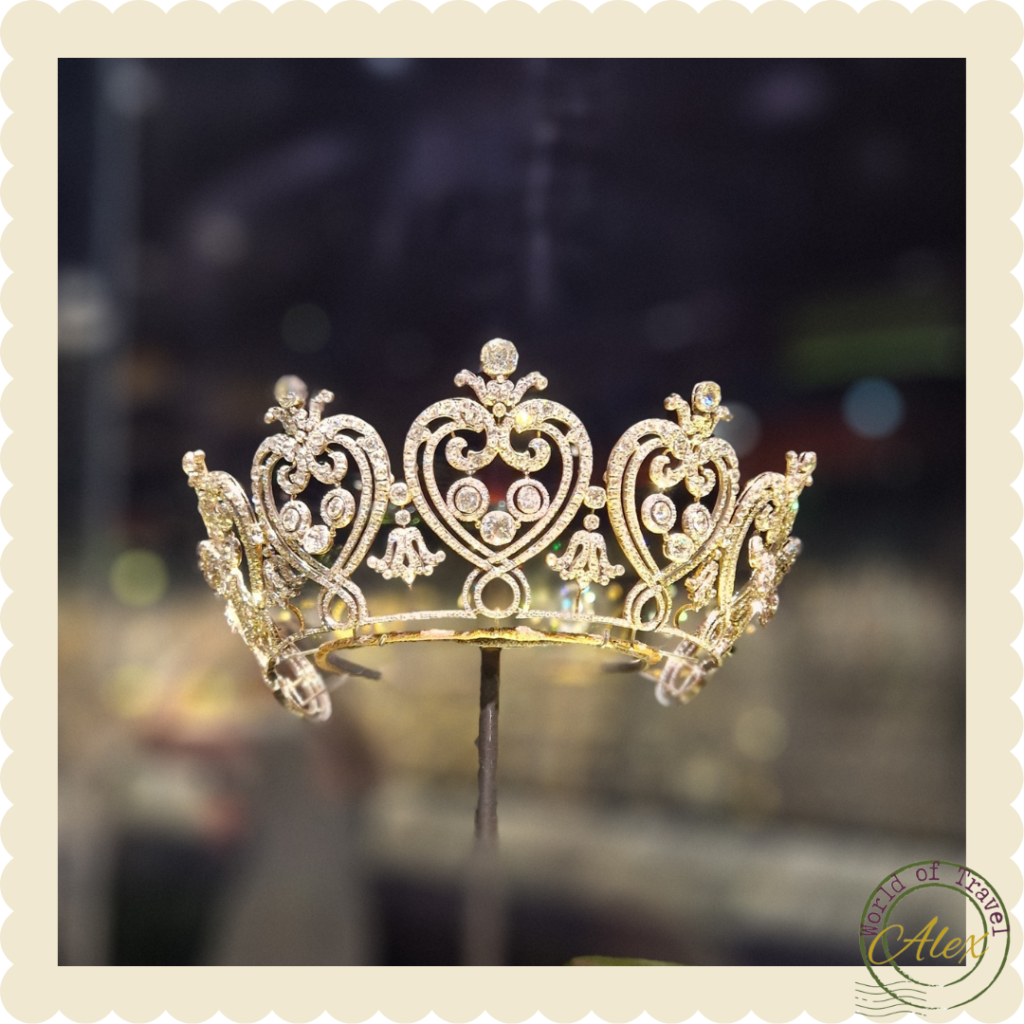
The Shannongrove Gorget
Dated to around the 6th century BC, the Shannongrove Gorget is a remarkable gold collar originating from Ireland. Its intricate design, featuring gold discs with a 9.5 cm (3.7 in) diameter, showcases the artistry of ancient Irish metalworkers. Ireland’s rich history in alluvial gold during the Bronze Age is reflected in this exquisite pies, which is a tangible connection to the past, offering a glimpse into the culture and craftsmanship of the time.
Queen Victoria’s Coronet
Crafted 1840-42 by Joseph Kitching in London, Queen Victoria’s coronet was a treasured piece, designed by her husband Prince Albert.
This exquisite coronet features diamonds set in silver and sapphires in gold, with a height of 3.8 cm (1.5 inches).
In a famous 1842 portrait by Franz Xaver Winterhalter, Queen Victoria wears the coronet around her chignon at the back of her head. This portrait, commissioned as a gift for the French King Louis-Philippe, reflects the zenith of the British Empire. Today, it remains a symbol of an iconic era and one of history’s most influential monarchs. The portrait followed Winterhalter’s initial version, which now graces the White Drawing Room at Windsor Castle.
Empress Josephine and Napoleon
This emerald and diamond necklace and earrings set in an elegant open-back combination of gold and silver. The piece was likely crafted by Nitot and Fils in 1806. Napoleon and Josephine presented this parure to their adopted daughter, Stéphanie de Beauharnais, on her marriage to the heir of the Grand Duke of Baden.
Crafted in France for Empress Josephine, the laurel spray showcases the opulence of the era. Rubies and diamonds are meticulously set in a combination of gold and silver, creating a harmonious blend of materials. This precious spray, measuring 17.2 cm (6.8 inches) in length, is believed to have been a part of the elaborate garland that Josephine commissioned in 1809. She also requested a jeweled bouquet using stones repurposed from an earlier ruby and diamond parure.
Accessibility and facilities
The V&A Museum in South Kensington provides wheelchair access, assistance for guide and assistance dogs, accessible toilets, resources for those with visual and hearing impairments, and multilingual services. There are both lifts and WC facilities throughout the entire building.
The V&A Main Shop, Fashion Shop, and Exhibition Road Quarter Shop holds a range of art-inspired products, from books and jewelry to homeware and fashion. They are open daily from 10:00 to 17:30.
The Main Café is open daily from 10:00 to 17:00, serving a range of meals, cakes, drinks, and coffee. The Garden Café is an oasis at the heart of the museum, open year-round with weekend service during winter.
Public transport
Train: Victoria Station (35-minute walk)
Underground: South Kensington (5-minute walk), Gloucester Road (10-minute walk).
Bus: Bus stop Victoria and Albert Museum (Stop N), bus no. 74, 414 and C1.
Opening times and admission
Daily: 10.00–17.45
Friday: 10.00–22.00
The Admission at the V&A is free, however, some exhibitions and events carry a separate fee.


